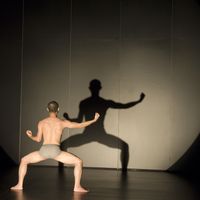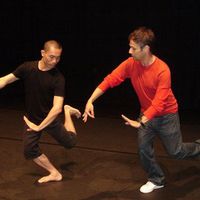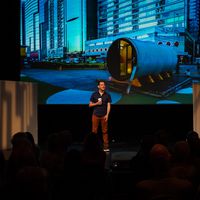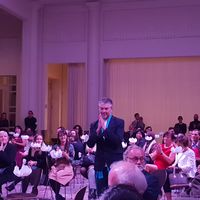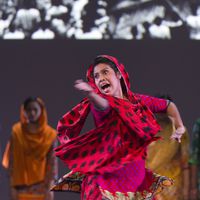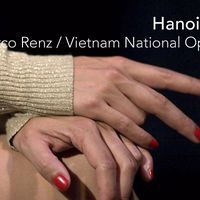Merging the classical with the contemporary | An interview with Pichet Klunchun

Thai dancer and choreographer Pichet Klunchun presents his work ‘I am a Demon’ at the ASEM Cultural Festival on 29 October 2018 at the Centre for Fine Arts-Brussels (BOZAR).
Merging traditional Thai classical dance language with contemporary sensibilities, Klunchun occupies a rare place in the dance world. Klunchun started his training in Khon, a Thai classical mask dance, as a teenager and since then he has collaborated globally, including his collaborative work with Jerome Bel called ‘Occupy the Museum’, held at the Weltmuseum Wien in 2013. Klunchun talks to culture360 about his perspectives on traditional and contemporary approaches, as well as his experience working in the international context.
For me, the idea of ‘questioning makes people curious about culture’ is exciting because in Thai society, culture is untouchable. This challenges me to find answer or to do something that no one else does. During the process of finding answers, I learn and gain new knowledge.
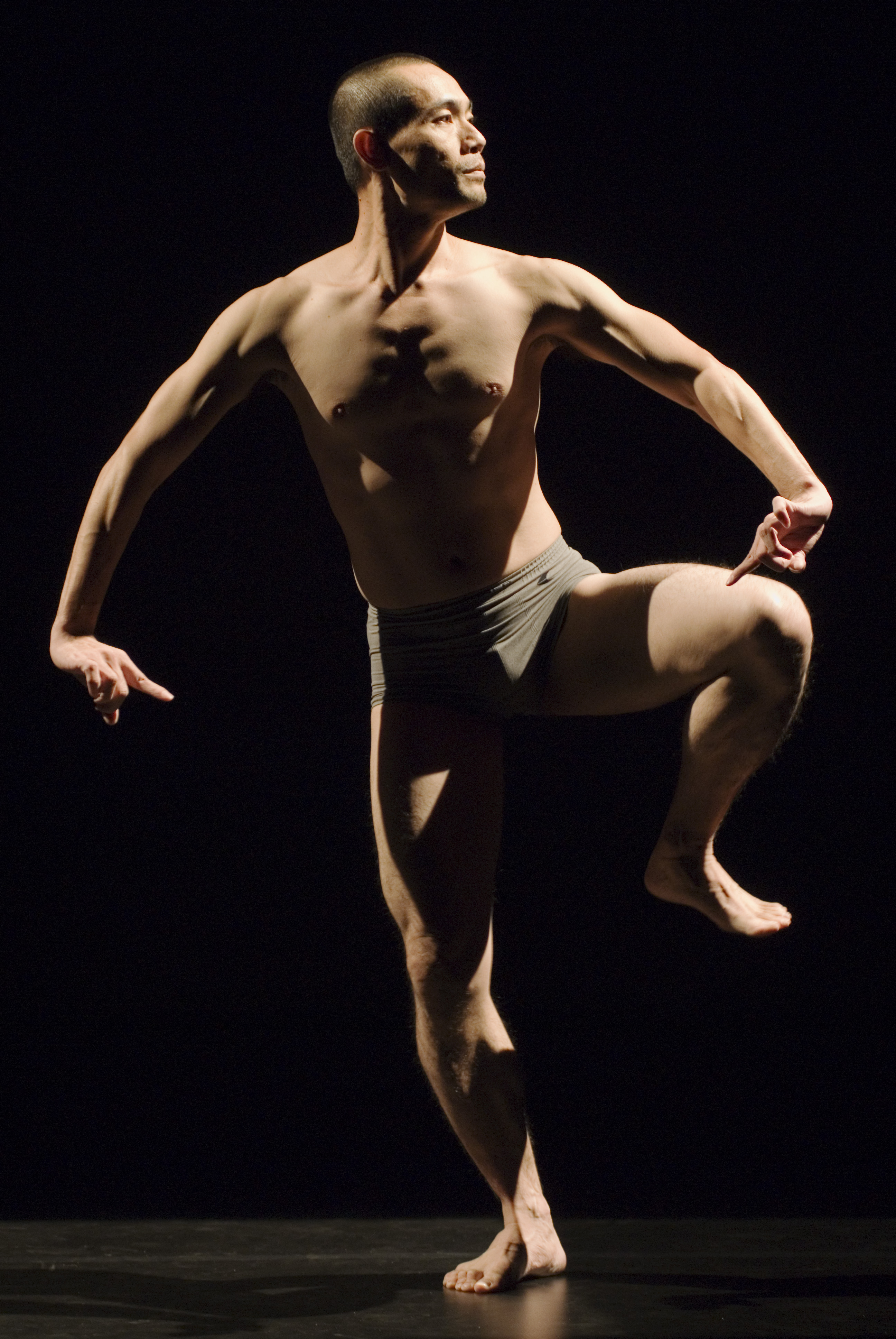
Pichet Klunchun in 'I am a Demon' (c) Edmund Low
‘I am a Demon’ was created in 2005. It looked at the intricacies of Khon dance through a contemporary lens. As someone who has constantly been working in a multi-cultural environment, could you tell us about how your process of creation has been influenced over the years by the exposure to varied cultures?
‘I am a Demon’ was created about 12 years ago in order to prove myself that I am a Khon dancer, even though I was not educated in the normal system and as a result the conservative community did not accept me as Khon dancer, looking at me as an outcast. In ‘I am a Demon’ I used the contemporary approach, which involved the deconstruction of Khon basic practice. I tried to find a new form to tell the story about Khon from my viewpoint, purely through the body, without costumes and mask and other Khon elements. This piece shows the process of Khon dance training, which is not normally presented on stage because Khon is normally presented as finished dance production.
You have said earlier that, ‘questioning makes people curious about culture’. But questioning culture can be challenging. How do you manage to navigate such a situation?
For me, the idea of ‘questioning makes people curious about culture’ is exciting because in Thai society, culture is untouchable. This challenges me to find answers or to do something that no one else does. During the process of finding answers, I learn and gain new knowledge about other things. It made me see problems and weak points of Thai society and it made me see that culture dominates mind-sets and the management of politics, education, family and other elements in the society.
In 2017, you set up Chang Theatre in Bangkok, which does not follow the conventional performance space requirements to reduce the boundary between performers and audience. What kind of response have you received from the local audience? How do you sustain the operations of Chang Theatre? Is ticket revenue adequate? If not, what model do you follow to keep the theatre running?
I want to develop Chang Theatre as a social benefit for the community. I have an aim to use art as a Spiritual assurance of Humanity. I want to provide space for the arts in the suburban area and I selected a community that has both Buddhist and Muslim people mixed in the same area. I believe that theatre is a space that allows people from multiple cultures or multiple religions to share space and enjoy it together. The response from audiences has been good. We have different types of audiences in terms of ages, religion, occupation, generations, education, and more, because Chang Theatre is not restricted to only one type of performance.
I do not have any model to run the theatre and I do not get any support from the government sector. We do not have regular sponsors and ticket sales are never enough to sustain the theatre expenses. Apart from the shows that sell tickets, we also have a few free performances during the year. The money that I use to sustain the theatre comes from the income and the savings earned from “Pichet Klunchun Dance Company” and my own income. What keeps Chang Theatre running is the great support from a circle of my artist friends as well as some arts organisations that have brought productions to perform at Chang Theatre, such as the French Embassy and the Japan Foundation in Bangkok. These organisations supported the production costs of the performances and my artist friends supported me by bringing their shows to Chang Theatre for free.
I do not know how long I can run the theatre but it is not a big problem for me because I am happy to share the great art experience with other people. Even if we will not have any more shows at Chang Theatre I will not be sad because I have already contributed to society. My dream is to see Chang Theatre get support from Thai people in the future.
In your opinion, how has the contemporary dance sector evolved in the Southeast Asia region in the last 10 years?
It has been very active, and it is expanding in many fields such as dance, theatre and film. There are many new generations of artists that have more variety of techniques and forms. The contemporary society in Southeast Asia grows a lot, as you can see in the emergence of many dance companies and theatre companies that are working as full-time companies.

Pichet Klunchun in 'I am a Demon'
Most of your work is collaborative and brings together international team members. What are the underlying key determinants for collaborations to function?
Firstly, the artist that I want to work with must be very different from me, as if they are from a different world so that it seems like it will be impossible to work together. Secondly, the artist must work with something I have never done before, as it will allow me to learn something new. Thirdly, I should be able to bring the knowledge and experiences gained from the collaboration to other artists in order to develop my dancers.
You have worked in different part of Asia and Europe, both to present your work as well as to co-create new work. How different has your experience been of working in these two regions, Asia & Europe? How can two regions deepen cultural co-operation in the area of dance?
For the European region, I must use a lot of logic and knowledge and give attention to the current global situation. For Asia, we are more focused on dance techniques and the body. It is very important for me to work with both regions because I can maintain both body and brain, knowledge and being in the present.
In October, you are presenting a new piece at Festival Tokyo called ‘MI(X)G’. Can you tell us more about this piece?
It is a piece that focuses on migration and cultural diversity and how to live together peacefully and accept each other. The performance explores the constantly changing nature of Asia. It takes its title from the migration (M) that is accelerating in the region, the immigration (I) that brings about encounters with the unknown (X), and then the joy of harmony through accepting or granting (G) this. Six choreographers and dancers from across Asia join 24 Japan-based dancers, selected by audition. The dancers wear unique balloon-shaped sculptures. These remarkable forms, in various shapes and colours, sway to the groove of the DJ’s music. Performed in an open plaza without a stage, the show immerses audiences in a singular kind of festive space.
What kind of projects are in the works for 2019?
It has been two years since the premiere of the most recent piece of my company’s work. Now, I am working on my company’s new piece, ‘No. 60’. It is the deconstruction of Theppanom, the structural continuity that connects together the mae-bot (basic patterns), which are the 59 core poses and movements that all new classical Thai dancers need to master. I deconstructed and remade these poses using ideas and modes of analysis that come from diverse fields, such as physics, architecture, and religion. By rethinking and reimagining these basic parts of classical Thai dance in the Theppanom poses, students learn to do more than just practice, repeat, copy and memorise the formal art of their masters. The piece will be the outcome of the deconstruction that I make.
-----------------------------
Cover Image (c) Weerana Talodsuk
The ASEM Cultural Festival takes place on 18-30 October 2018 at the Centre for Fine Arts-Brussels (BOZAR) in Brussels, Belgium alongside the 12th ASEM Summit (ASEM12) (18-19 October 2018, Brussels), which brings together Heads of State and Government from the 53 partners of the Asia-Europe Meeting (ASEM) for dialogue on “Europe and Asia: Global Partners for Global Challenges”
The ASEM Cultural Festival is a celebration of dance, digital art, film, music, theatre and visual arts from Asia and Europe and features among others Ariunbaatar Ganbaatar (Mongolia), Bi Gan (China), Honore d’O (Belgium), Pichet Klunchun (Thailand), Wang Shu (China), and Svetlana Berezhnaya (Russia).
ASEM Cultural Festival Programme: https://bit.ly/asemfest
The festival is organised – as an official side event of ASEM12 – by Centre for Fine Arts-Brussels (BOZAR) with the support of the Asia-Europe Foundation (ASEF) and the European Union, the host of ASEM12.
www.ASEF.org
Similar content
from - to
29 Oct 2018 - 29 Oct 2018
07 Nov 2009
11 Oct 2018
By culture360
19 Oct 2018
from - to
04 Dec 2014 - 14 Dec 2014

